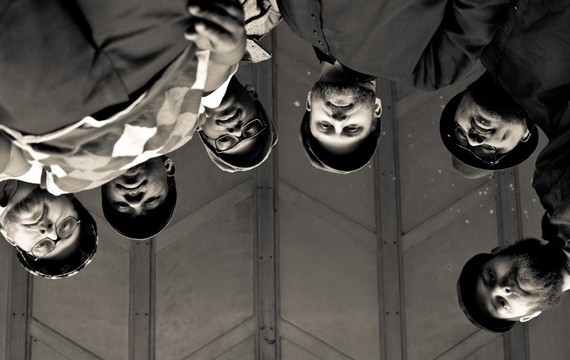Why would a Reggae band from Reno, Nevada (of all places) call themselves Keyser Soze? Anyone familiar with the ghost-like demonic character in the film, The Usual Suspects, might find this perplexing, since the album is anything but dark. Actually, the band's new effort, The Remedy, is an uplifting collection honoring Reggae, an established musical genre that came from a loud island--loud because of a popular sound system concept that turned the urban streets of Jamaica into blaring street parties.
Prior to having their own recording studios, in the early 50s native Jamaican DJs loaded up trucks with generators, turntables, and huge speakers then headed out to the ghettos of Kingston to play R&B and Bebop records. Jamaicans, then still British subjects, would dance until they dropped in open spaces to this primitive mobile disco, a system that would become complex by the time the island gained its independence from Britain in 1962.
But to understand this evolution one would have to step back to the 40s when the island was influenced by live American Jazz orchestras. In the tourist sections of Jamaica, the Eric Dean Orchestra honed in the skills of trombonist Don Drummond, sax man Tommy McCook, and many other fine musicians. Jazz was the genre to let your hair down and dance the night away. Although, by the 50s, Jazz began to fall out of vogue when people started wanting music with a thick beat. It was replaced by imported American Bebop and R&B. This was when the loudspeaker had center stage. But Jamaica started lusting for their own recording studio. The first recording studio, Studio One, opened for business in 1954, but even then continued to record licensed U.S. material. The golden age of Studio One came with bands like The Wailers and The Skatalites.
In the 60s, for Jamaica, the start of musical independence came with Ska, then Rocksteady, the forerunners of the Reggae genre. Ska combined elements of Caribbean Mento, the grandfather of Reggae folk, and the African and French influence of Calypso with American Jazz and R&B. Rocksteady followed as a reaction to the fast pace of Ska as well as the realities of poverty. Reggae can be said to be a medley of soundscapes migrating from Europe, America, and Africa. But you might be thinking how the band Keyser Soze fits into this picture.
For starters, the band's newest album, The Remedy, obviously had no intention of going to the dark side with this album. Instead, the emphasis is on enjoying life. Like the early folkloric Mento music, this album lifts the spirits with Jammal Tarkington's piquant saxophone and Rodney Teague's zesty trombone juxtaposed to inspirational vocals and hip-swaying percussions. The forty-three minutes devoted to this effort deliver an eclectic combination of the offshoots of Reggae: Ska, Rocksteady, as well as what came after Reggae--Dub. For those who are not familiar with Dub, it is an instrumental musical genre that remixes existing recordings by emphasizing the drums and bass. Keyser Soze ends the album on a Dub note with "Harvest Dub", a simple looping arrangement. But, the highlight of this album comes when seductive jazzy vocalist, Lauren Nagel, sings "Catch Your Breath".
The question: Does Keyser Soze do more for Reggae than Reggae has done for itself? One might say that the Reggae they created is good, but one might also say that their music is not Reggae Nouveau.
You Can Stream Keyser Soze's The Remedy On BandCamp.
